After I made my Sierpinski triangle and square fractals, I started googling and noticed that they belonged to the family of n-flake objects. I became a bit curious and had to make a few of them myself. And of course I used postscript to try to keep an obscure/archaic language alive for another day.
The code for all of these is available here.
Pentaflakes
Pentaflakes involve placing smaller regular pentagons into another larger pentagon so that: they are equally spaced out, edges from neighbouring pentagons are coincident, pentagons do not overlap with each other, and the child pentagons touch the corners of the parent pentagon. It is best explained with the images below.
A quick note about the scaling factor. Using some basic trig it can be calculated to be:
Click to view the PDFs in a separate window (or tab).
Hexaflakes
The same algorithm can be applied to hexagons. Even though it might be obvious, but for completeness the scaling factor is:
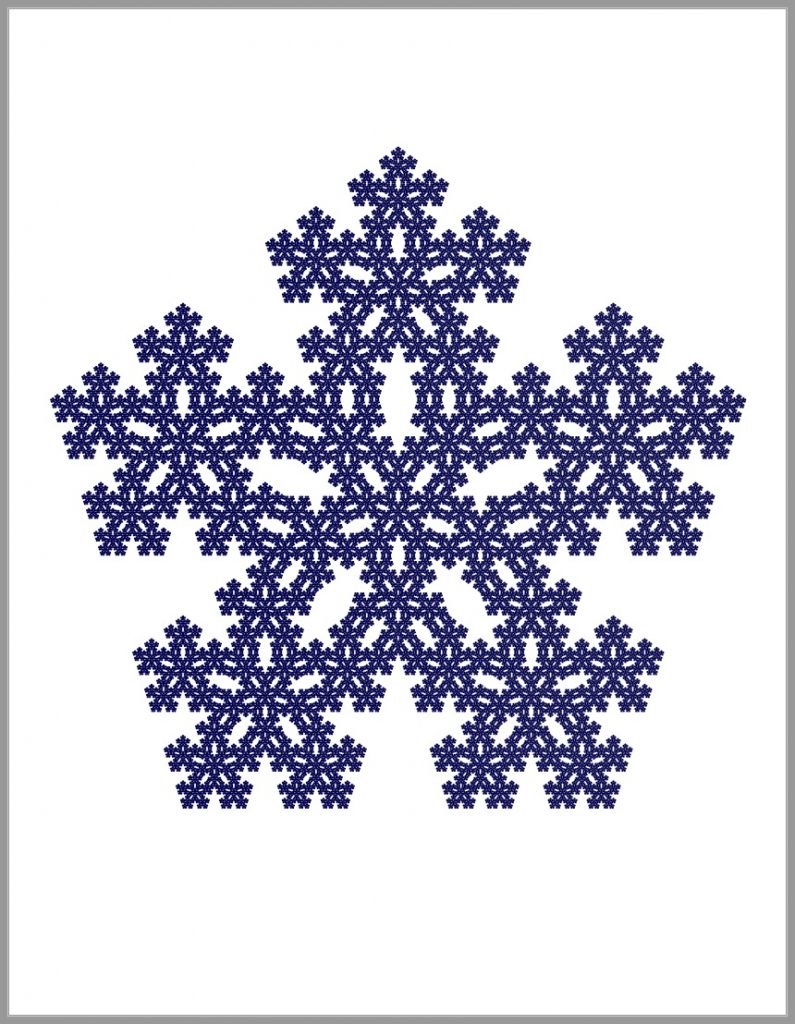
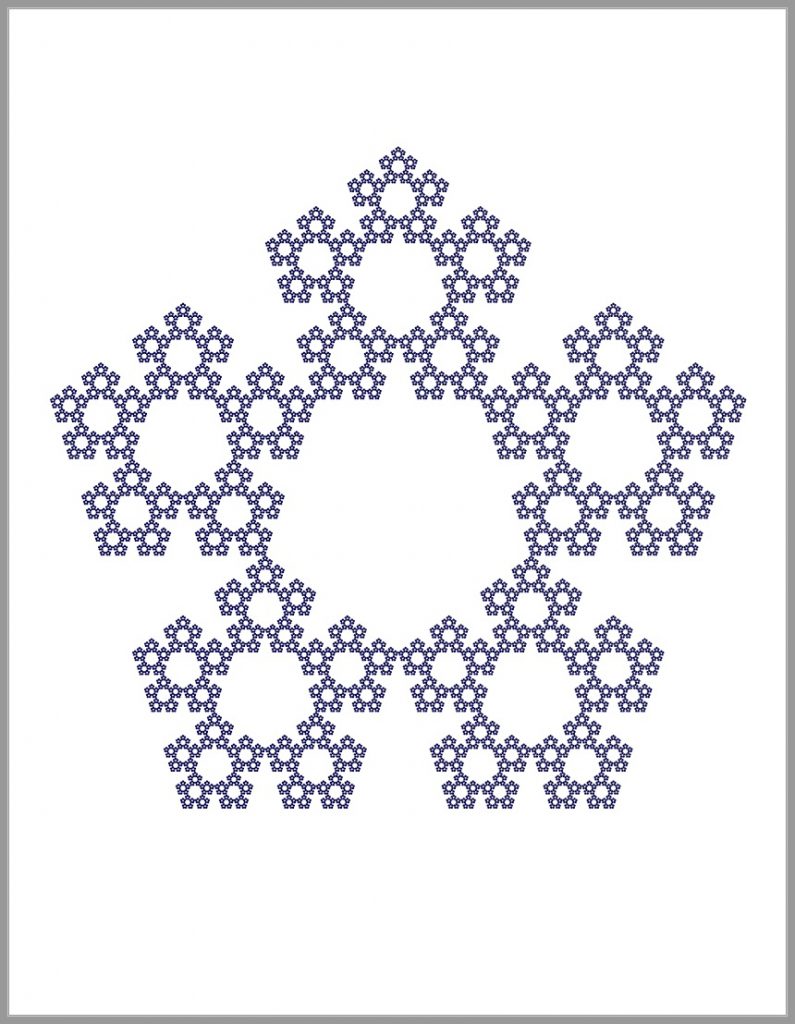

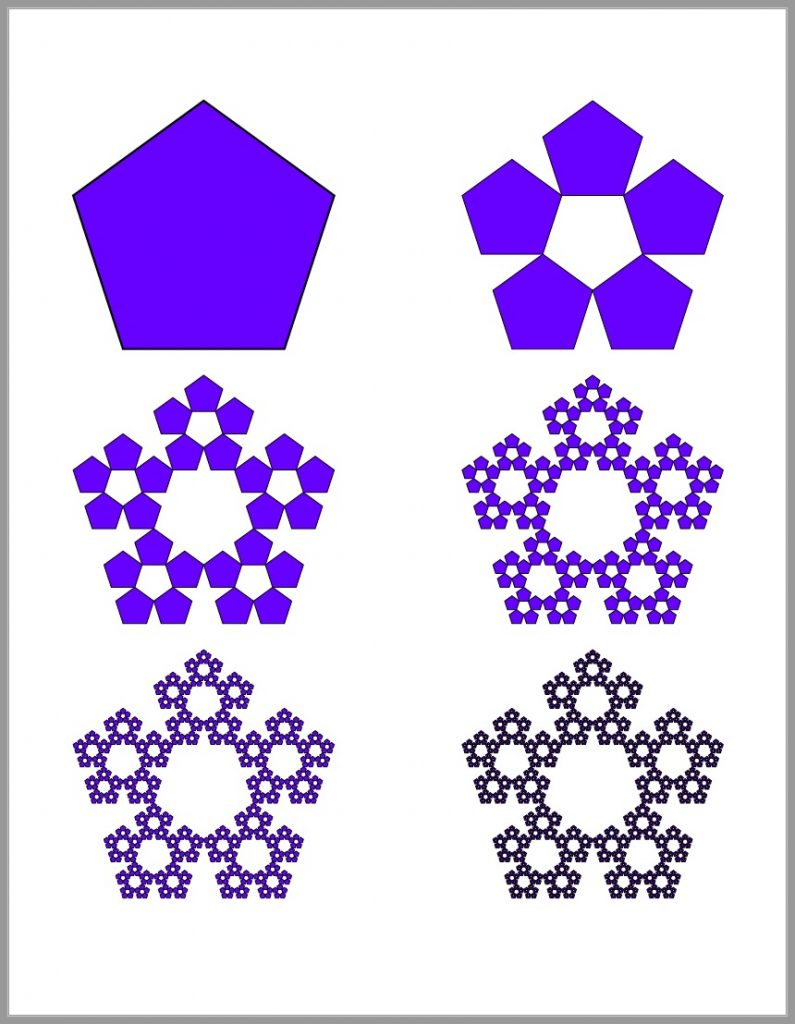
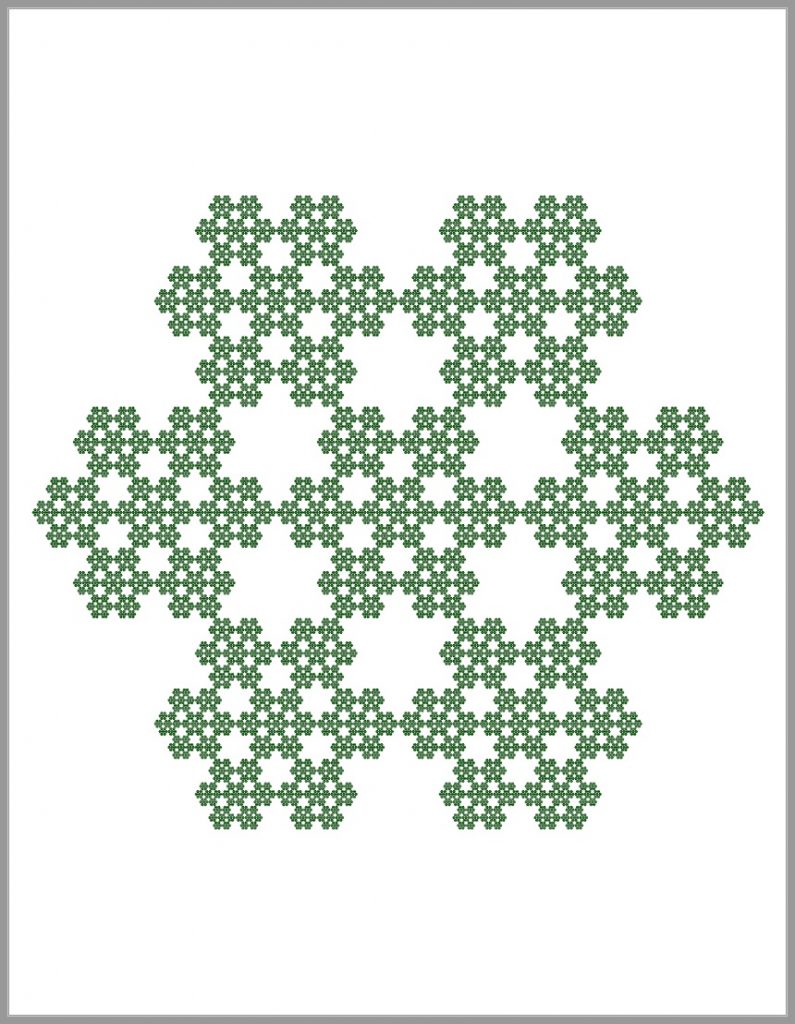
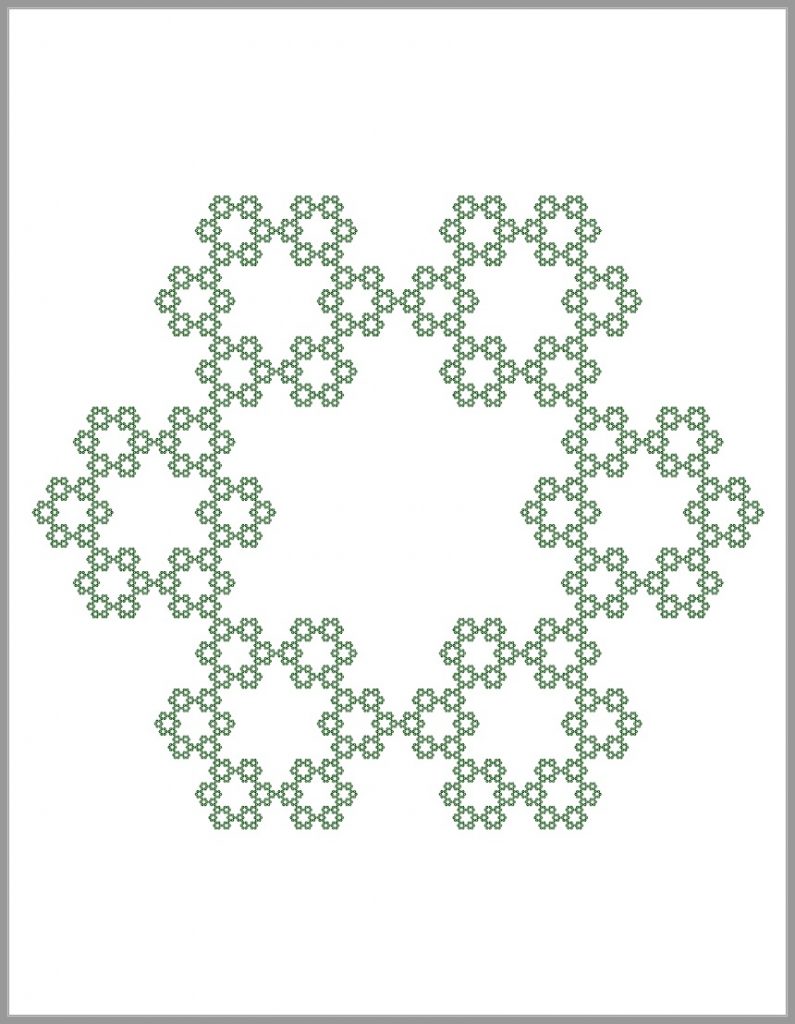
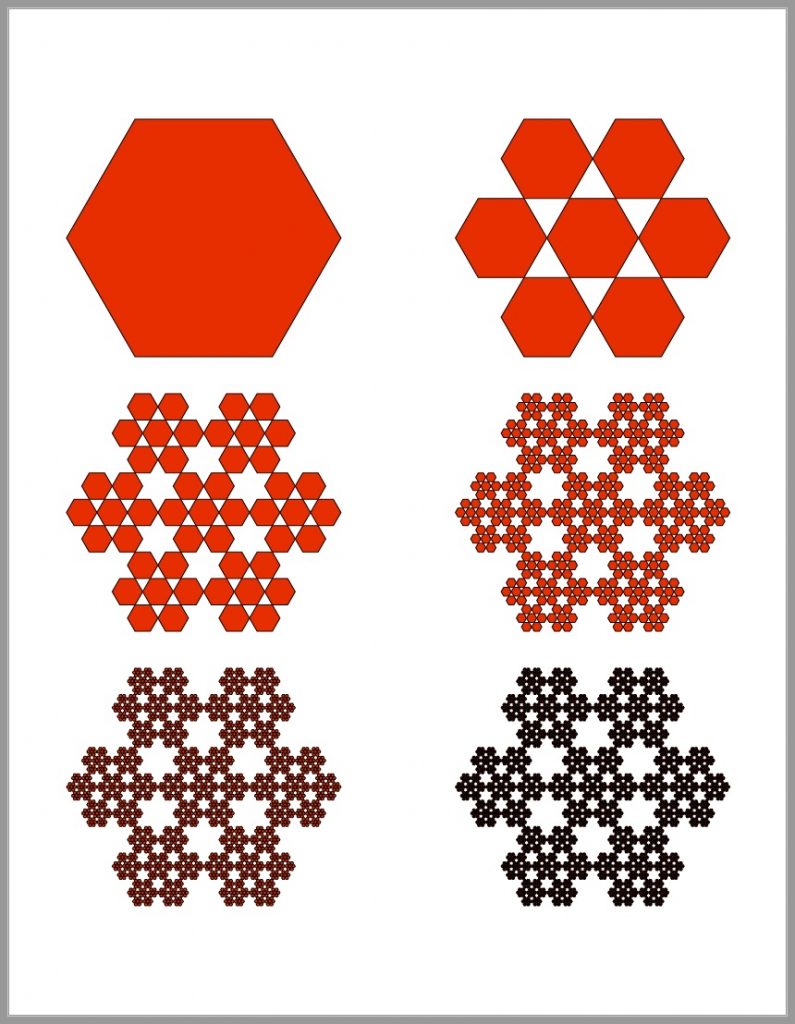

No Comments